Elephant Nature Park Review – Chiang Mai
Elephant Nature Park Review
Finally, the day we’d eagerly looked forward to had arrived – it was time to visit the Elephant Nature Park in Chiang Mai! And it totally lived up to our expectations, and more.
Our journey began when we woke early for the 8am pick up, which was to be directly from our room. In the Elephant Nature Park’s minivan, there were seven others along for the ride. So together with our travelling family of five, the minivan was full at 12 passengers. Our guide from the Elephant Nature Park, Por, introduced herself before switching on a DVD for us to watch on the way.
There were two parts to the DVD. The first was a mini documentary, explaining the dark side of elephants being used for tourism in Thailand. The second part explained the safety rules and guidelines of the park, and prepared us for what we were all about to see.
I was feeling unexpectedly emotional watching the DVD, seeing and hearing about elephants being abused for tourism. This included baby elephants, who were being made to work the streets at night, separated from their mothers. I’m sure the poor mothers were fretting just as much as the vulnerable, precious babies. All the while, their mahout (trainer) stood to earn so much more money than an average Thai worker would ever make in a week or more. On the DVD, they pointed out the telltale behaviours and signs that these baby elephants were stressed and scared. It was heartbreaking.
But it didn’t end there.
We also learned that many elephants at the Elephant Nature Park have been (and still are) emotionally traumatised. The majority of the elephants that are rescued have ongoing mental issues, due to the abuse at the hands of their mahouts. Some of the most effected elephants will continually rock back and forth.
How can this be allowed to happen?
The most disturbing story that left me holding back a barrage of tears was hearing the story of one of the female elephants, Jokia. When the logging trade became illegal, her owners could no longer afford to keep her. She was sold to another owner and was again put to work. Later, Jokia became pregnant. When she gave birth, her baby — still in the sac — fell down the mountainside. She tried to rescue her baby but she couldn’t — her baby died. She went into a depression and did not want to work. She simply wouldn’t move.
Using a slingshot, Jokia’s mahout would aim it at the mourning elephant’s eye, hitting her in an attempt to force her to move. Only one day, Jokia got so fed up with the slingshot, that she hit out at her mahout with her trunk. He retaliated by stabbing her in the eye with a knife, blinding her instantly. Hadn’t this poor elephant been through enough?
It was such a fortunate day when Lek, the Elephant Park’s founder, met Jokia’s and heard her story. She was deeply moved and offered to buy her. But, the price was always too high for what she could afford. Thankfully, Lek was eventually able to reach a deal to buy Jokia, who was blind in both eyes and in desperate need of a loving home. Finally, she was free.
Sadly, many of the elephants at the Elephant Nature Park are blind in one or both eyes. This is mostly due to the horrific treatment from their previous mahouts. But surprisingly, one elephant became blind due to tourists constantly taking photos with a flash (you are not allowed to use flash photography at the park). At the Elephant Nature Park, there are also elephants who have been significantly injured after stepping on landmines, being hit by vehicles, or with feet that have been maimed from traps. While the physical wounds may have healed, there is no doubt some emotional wounds are still there, as they limp around the park.
Many elephants have been rescued from the cruel, soul destroying training from tourist riding camps too. Even after the elephants have been broken in, they are trapped into a life of tourism slavery, chained up at night ready for the next day of tourists. What a depressing existence. It’s no wonder they arrive at the Elephant Nature Park in such poor mental condition.
Buying these elephants in an attempt to save them is a double edged sword. It’s still a lucrative business if you buy the elephants, fuelling the demand. It’s also expensive for those trying to rescue elephants.
With a lump in my throat as we drove past many elephant riding camps, I hoped I would be able to hold back the emotion from what I’d just learned. An incredible amount of tourists flock to ride these beautiful creatures every single day — do they not know that these poor old souls are painfully tortured with bullhooks to be broken in for riding?
By the way, this is a bullhook:
If that looks harmless, or if you think it might be fun to ride an elephant, click here. These harmless creatures do not deserve this.
Arriving At The Elephant Nature Park
Around an hour and a half after being picked up from our hotel — including a 10 minute break on the way — we finally arrived at the Elephant Nature Park. We were shown to a table, especially reserved for our group. There were lots of people at the park already (if you make your own way to the park, you can start earlier). They were in groups of 12 and with a designated tour guide, just like us.
Por explained a few housekeeping items, then it was onto the first task: feeding the elephants. This immediately lifted our spirits — something we could do for these gentle giants who’ve had a lifetime of suffering.
So, what does an elephant eat? Alot.
The Elephant Nature Park have a team preparing food for the elephants and other animals non stop. Annually, the cost comes to around $250,000! So before you groan about an entry fee, consider that an elephant spends around 18 hours of the day eating (almost as much as my kids). This equates to around 200 kilograms of food daily per elephant. Factor in all the elephants at the park, and you’re preparing 3 tonnes of food every day. That’s pretty impressive.
To give you a visual idea of what an elephant might eat, here is a snack for an elephant — which we had the pleasure of helping out with. Watermelon, sugar cane and cucumber.
Our youngest daughter (who is almost three) was so excited to come and see the elephants, but nerves got the better of her at feeding time, and she became frightened. But she was very safe, as you need to step behind a line which makes sure the elephants can’t slap you in all of the excitement to grab more food (wow, sounding even more like my house).
We all had a turn feeding them and then it was time to head out for our first walk into the park.
The first stop was to an undercover area which featured a communication whiteboard, listing all the animals that were undergoing treatment for injuries or sickness. The Elephant Rescue Park also rescues other animals, like dogs, cats, buffalo etc.
Scroll down now if you have a squeamish stomach, but I think it’s important to see what these poor animals are going through at the hands of men.
The photos below show the foot of one of the elephants that was rescued and treated at the Elephant Nature Park, after stepping on a landmine:
There were quite a few elephants being treated for landmine injuries. Landmines aren’t so much a problem in Thailand — the injuries tend to happen close to the Cambodian border. Unfortunately Cambodia still has a devastating landmine problem, as I wrote about after my visit to the Cambodian Landmine Museum.
And yes, the Elephant Nature Park will go to the extent of rescuing elephants from the border of another country. They’ll put them in the back of a truck, and slowly drive all the way to the park, usually in double the time of a normal car. You see, they have to make lots of stops to buy food for the rescued elephant. After all, they do eat for 18 hours of the day. How’s that for dedication of the park staff?!
Before we moved on past the undercover area, we were shown an elephant tooth. It was massive, the size and width of my hand! Many of the older elephants have no teeth, so they need to be fed soft food.
Here’s a picture of the main park office and viewing deck:
The small group of elephants we saw next included a couple of elephants with injuries to their feet. One of them had a foot that was disfigured and extremely swollen and purple. This was due to being caught in a trap when he was younger. As they wandered off, it was time to move again.
But before we moved on to see more elephants, I snuck in a quick snap with the kids (I’m rarely in photos, always behind the camera!). It’s actually really hard to get a personal or family photo, because there are so many people wanting to do the same. Most photos you take will have someone else in it!
When elephants arrive at the park, they quickly form very special bonds with specific elephants. They stay together and look out for one another, which is absolutely adorable. For example, a non-blind elephant will bond with a blind one, and they’ll hang out all the time. Always.
It’s a little nerve-racking being around the blind elephants though — they mean you no harm, but they rely on hearing to survive. So if they hear a noise and want to investigate, they plough on through, not realising that you’re there. So you need to be aware of your surroundings at all times, and take note of the blind elephants. It’s important to talk to them by name if you’re approaching or patting them, so they know you’re there for them. While your guide will let you know when you’re around a blind elephant, they are fairly easy to spot — their eyes have cloudy coatings. Ugh. It’s so hard not to feel sorry for these beautiful creatures. Sight is such a precious gift — a gift that was unfairly stolen from these gorgeous elephants.
Next, we met another group of elephants. Amongst them is the beautiful Jokia. I wanted to give her a great big hug and tell her I was sorry for the pain she had been through. But of course, all of these elephants have suffered all the same.
The group of elephants were all eating of course (they really do not stop eating!) and some were having a good scratch. I think this must be the elephants’ favourite scratching tree — if you look closely, you’ll notice that it looks very well polished and shiny!
It was time to move on and head back in — it was time for lunch! How that flew.
The Elephant Nature Park put on an impressive lunch buffet for an hour. The food was vegetarian which was a nice touch. While I am not vegetarian (although the more I travel, the less meat I want to eat after seeing all I have) the food was very tasty. I enjoyed a surprisingly delicious cup of tea too! Since lunch was included with entry, I expected something basic, so it was a nice surprise to have a full belly of yummy Thai food.
After lunch, we had an hour of free time. We enjoyed elephant watching from a distance, as well as wandering around talking to staff and guests from all over the world. There was even someone who knew of my website, BellyBelly! We also had cuddles with the park’s other inhabitants, who too are rescued — and desperately needing loving furever homes.
The Elephant Nature Park is also home to around 400 dogs. The family friendly dogs roam free, but others needing love and training are in big dog runs. The park has rescued dogs from mass baiting programs and other atrocities, including the illegal dog meat trade in Laos and Vietnam.
You can sponsor or adopt these dogs from most countries (they wont send them to Australia or New Zealand, due to lengthy quarantine requirements). Or you could opt to be a volunteer plane buddy. If there’s a dog going to a home in your country, you can be the dog’s escort to help him or her get there (at no cost to you). The dogs can’t fly alone, so if you’re interested in helping, you can find out more details on the ENP’s dog rescue page. They also rescue cats.
After lunch, it was time for something really fun and exciting – elephant washing! The elephants have a daily bathing ritual, where they get to enjoy (you guessed it) eating — while being bathed by humans. The elephants made their way to the river, and we were all given a bucket!
The washing began:
But of course, it was only a matter of time until this happened:
Before I knew it, there was water flying high over both sides of the elephants. Everyone was drenched (apart from myself, who shrieked mercy since I was holding a camera!). Once the elephants — and participants — were sufficiently soaked, we left the river and gathered above the riverbank, were the elephants were moving on to the next item in their agenda.
You see, elephants have a backwards washing ritual. Right after they’ve had a wash, they go and throw dirt and mud all over themselves. For some elephants, this is followed by walking under the deck (pictured below), and giving the top of their back a good old scratch.
After spending some time with these gorgeous guys, we moved on to meet some more elephants.
This next group consisted of four adult females and a male baby, who was 2 years old. Elephants are very protective of their babies. Everywhere you go, you’ll see them forming a wall around the baby, no matter if they’re eating or moving around the park.
There is something really special about elephants. You can truly feel their bond and loyalty to one another.
Soon after, it was time for an afternoon tea break, which involved another cup of tea and some yummy treats. Again we sat around and chatted with other guests, before being told that there was just one more walk left for the day, before it was time to go home. Boo!
By now, the park was really muddy – there had been quite a bit of rain. Fortunately, the weather was warm, but not as hot as the city. It was really pleasant, even with the rain.
If you think that you can get away with wearing thongs for this adventure, think again. Unfortunately for me, my daughter adopted my only pair of shoes (which she then broke!) a couple of countries prior. So we were both wearing thongs. Several times I kept walking along while my thongs were behind me, stuck in the mud.
Here’s another reason not to wear thongs, demonstrated by my daughter. I had the same fate, just not as bad:
Every step was a slosh of mud up the back of our legs!
Speaking of legs, on this last leg of our journey, we enjoyed an informative chat with our tour guide, Por. We learned that the park had to stop their breeding program, as they no longer have the space to grow. There is one male elephant who is separated from the others, as his high testosterone levels make him a little aggressive, and of course, they can no longer breed. However, it doesn’t stop the other elephants from heading over to chat to him through the barriers. They all reach out with their trunks and repetitively touch one another, as if they’re having a big catch up chat. It was beautiful to watch!
We also learned that when the baby elephants get old enough, the males decide to go off with the other males and the females with other females. And apparently, female elephants can be quite the drama queen too, which we were witness to! They’ll make all sorts of noises if you disturb or inconvenience them in any way. Totally cute! We did enjoy hearing all the trumpeting going on all day.
But one thing is for sure, when a baby elephant freaks out, you move! Sometimes babies can get spooked and take off. It sets off an entourage of elephants making a hasty beeline for the baby, forming a circle around him or her, until the baby has calmed down. When the baby feels safe and wanders off, only then does the circle break.
In some ways, I think elephants are more human than we are.
The end of the day came around far too soon. I would have loved to do an overnight or even a week stay, but with a toddler, we were limited in what we could do. However, I know I will be back again some day. You can’t help but be drawn to wanting to help give back the heavy debt of human kindness owed to these magnificent elephants.
Supporting The Elephant Nature Park and Spreading Awareness
You’d be forgiven for thinking tourist attractions are all about profit, but it’s clear to see that the Elephant Nature Park runs on 110% passion, dedication and love.
The cost of running this park and saving elephants is very high. Not only is there a huge team of staff around the clock, tonnes of food to buy and prepare daily, a high cost to buy the elephants, and now, the massive cost of land if they are able to rescue any more elephants. They are at capacity, and have had to stop their breeding program. Visiting the Elephant Nature Park or making a donation will help this amazing place to continue to run.
But most important of all – please do not support the riding of elephants, or any elephant camps where elephants are used as entertainment, for painting or begging. The training methods are cruel, and the huge demand fuels it. Inform your friends and family, especially if they are travelling to Thailand. We owe these beautiful, soulful elephants, who desperately need somewhere to heal their hearts the only way they know how – in safety with other elephants.
There are so many ways you can help or volunteer, including overnight stays, weekly stays, vet volunteer stays, bringing needed items with you when you visit the park, and so much more.
Find out the many ways that you can help the Elephant Nature Park here and follow them on Facebook here.
Disclosure: I was not paid to write this review. I could have asked about it, but I didn’t want to. I’m very happy that our money is going towards the fantastic work that Lek has been inspired to do here in Chiang Mai. Bless you, Lek. Thank you for making a difference.
Kelly Bree Winder
In 2015 Kelly Winder travelled the world for 12 months with her three children and partner Doug, she hopes her stories inspire more families to do the same.

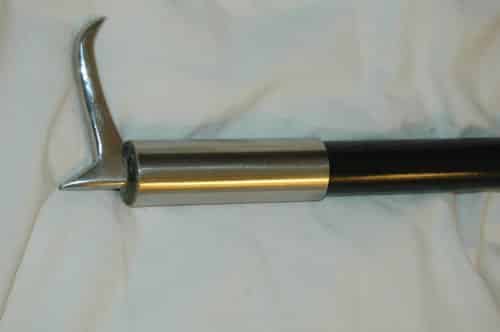

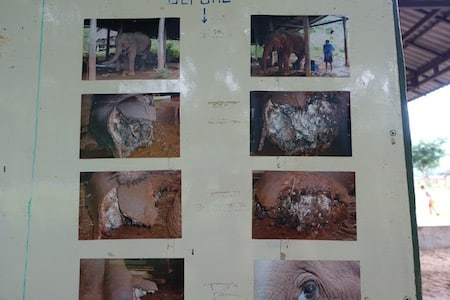

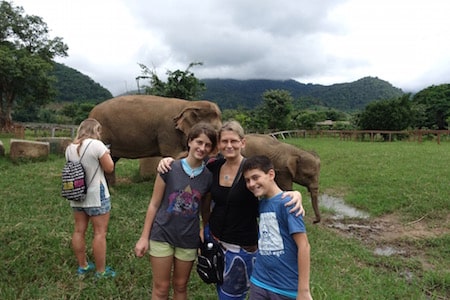
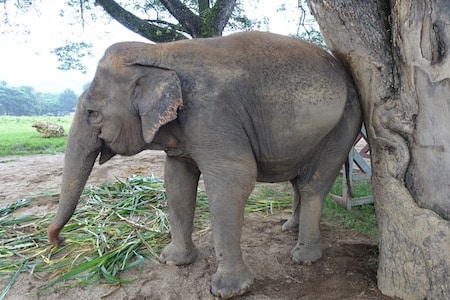
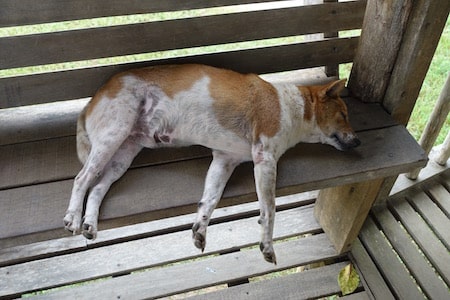
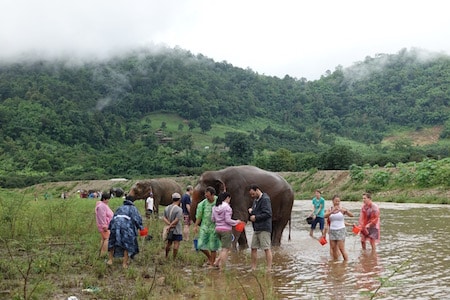

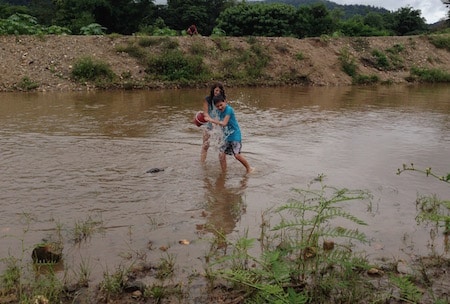
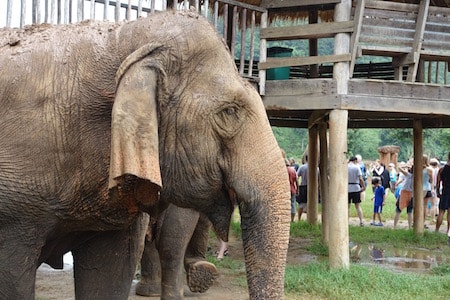
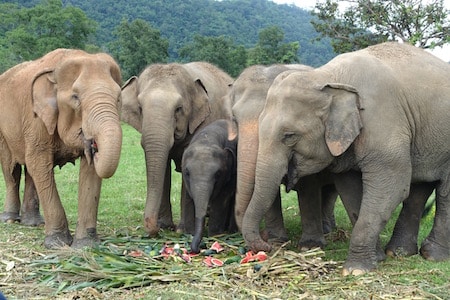
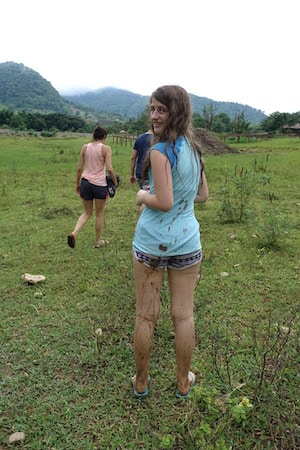




thanks Kelly for your insight to just one day at ENP – will be going there end of August next ???? am so excited but also know emotionally I’ll probably be a wreck ???? and will have to pull up my big girl pants! And know that my small contribution to volunteering there will be making a very tiny contribution to what Lek and her team do everyday ❤️????❤️
Oops End of August 2016 – wish it was next month ????????❤️
It is a great tribute to Lek and his work you have just done in writing this article. To be gone several times, I must say that your description is absolutely true, even for small cakes of tea time … this place is a paradise for elephants whose use in Thailand is changing step by step thanks to the relentlessness of Lek and friends. I hope that many people read your article and give the message. THANKS for ENP and for all animals as well as men, women and children who live …
Thank you for the great read. To visit here & volunteer is on my bucket list. I am so glad that ENP helps try to right what man has so savagely done to these wonderful creatures. Thank you to Lek, ENP & everyone that takes care of my favorite animal!